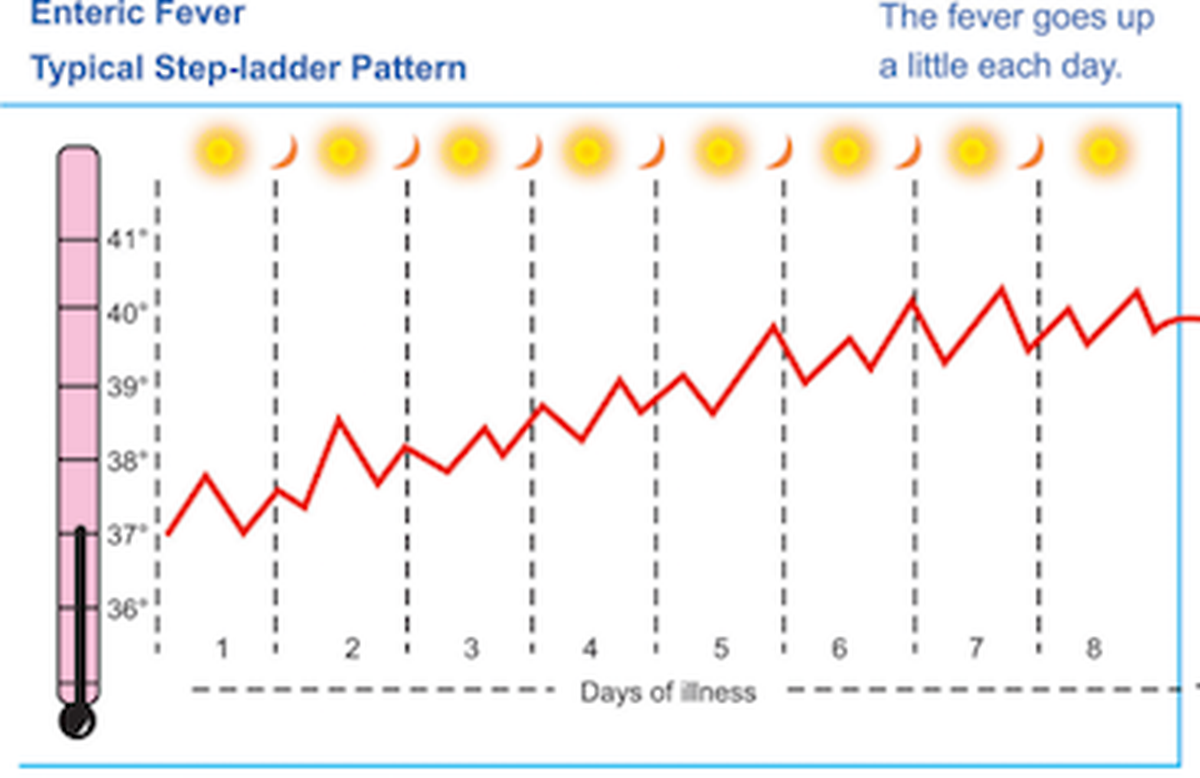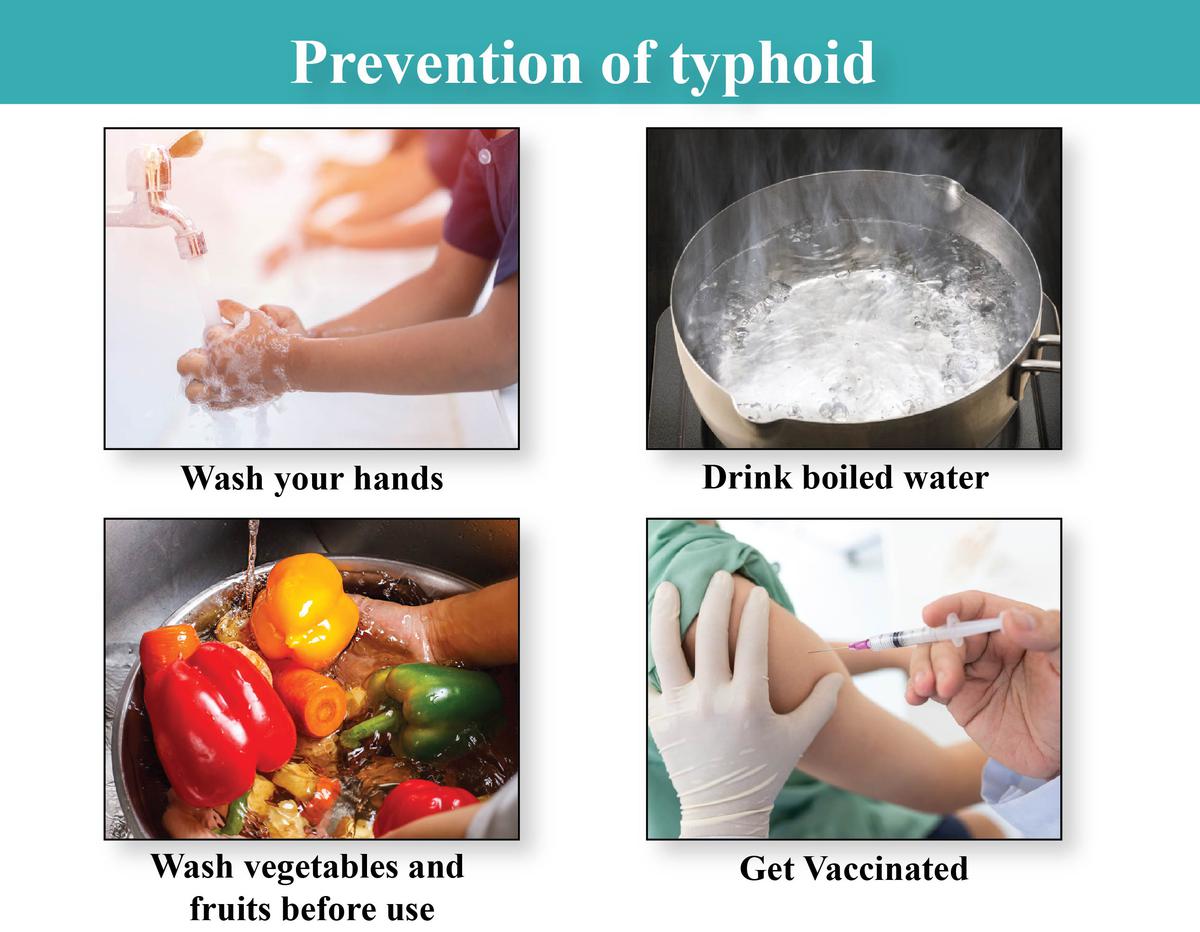Typhoid Fever - An Overview For Parents - The Hindu
- We have been seeing many children with Typhoid fever this season.
- It is caused by a bacteria called Salmonella typhi (around 80% of all cases) and paratyphoid fever is caused by Salmonella paratyphi A or B (20%).
Mode of infection:
- These bacteria enter the body through the mouth either through contaminated food or water.
- The feces or urine of typhoid-infected patients contain these germs and can contaminate water supply systems, especially during the monsoon.
- Undercooked food, raw vegetables or contaminated milk and dairy products can also be a source of Salmonella infection
Symptoms & Signs:
• Fever
• Vomiting
• Diarrhea
• Abdominal pain
• Bloated tummy
• Lethargy or tiredness
• Loss of appetite
• Coated tongue
• Liver & spleen enlarged
Fever in Typhoid

- The fever may be low-to-moderate and steadily increases in intensity and frequency.
- The child appears lethargic in between fever spikes whereas in viral fever usually held is well in between fever.
Lab Tests:
- Most reliable test is blood culture, which shows growth of bacteria after 48hours and is the best test for confirming typhoid.
- This test has an added value that it also can check which antibiotics will work well.
- A negative culture, however, does not rule out typhoid fever.
- The chance of getting a positive culture is the highest in the first week of illness.
- Prior receipt of antibiotics can interfere with the culture growth giving a falsely negative report.
- Hence it is important to do blood culture before starting antibiotics.
- Widal Test which is widely followed is not a reliable test for typhoid.
Treatment:
- Treatment with antibiotics will be started.
- Fever in typhoid declines only gradually and may continue for up to a week even after the correct drugs have been started
- Hence, one needs to be patient in these cases and not rush the doctor to change the treatment.
- Some cases of typhoid fever, especially if mild and/or detected early, will respond to oral antibiotics.
- This is especially true in older children who will take the medicines regularly and reliably without vomiting.
When will admission be required:
• child is feeling very weak
• unable to eat properly
• increased vomiting
• decreased urination
• not responding to oral antibiotics
• complications of typhoid such as bleeding occurs
Diet:
- Children should be offered balanced, easily digestible diet with lots of fluids including buttermilk, tender coconut water
- Avoid heavy, oily or spicy dishes.
- Properly cooked, light non-vegetarian food can be consumed during typhoid fever.
Relapse:
- Typhoid fever can occur in 5–10% of patients even after proper treatment and recovery & is known as relapse.
- It usually occurs 2–3 weeks after the initial fever resolves and is usually milder.
- Relapsed typhoid fever should be treated with the same antibiotics with proper dose and duration.
Vaccination:
- Typhoid vaccine should be given to children who have suffered from typhoid, because natural infection does not give long-term protection.
- The vaccine may be given as early as 4–6 weeks after recovery
Prevention:

- Wash your hands with soap and water before eating or handling food.
- Wash your hands after using the toilet & after cleaning your child's stools.
- Drink water that has been boiled for at least 1 minute.
- Eat food that has been completely cooked and is still hot.
- Wash vegetables & fruits well at home before consuming them.
- Do not eat raw vegetables or salads or cut fruits from outside.
- Do not buy food or drinks from street vendors, especially uncooked ones such as pani puri, juice, chutneys etcetera
- Do give Typhoid vaccine if not already given

Dr. Vaishnavi Chandramohan,
Consultant - Pediatrics & Infectious Diseases,
Rainbow Children's Hospital, Marathahalli, Bengaluru
"This article is part of sponsored content programme."
COMMents